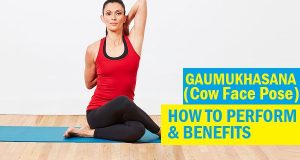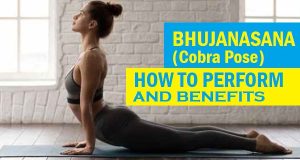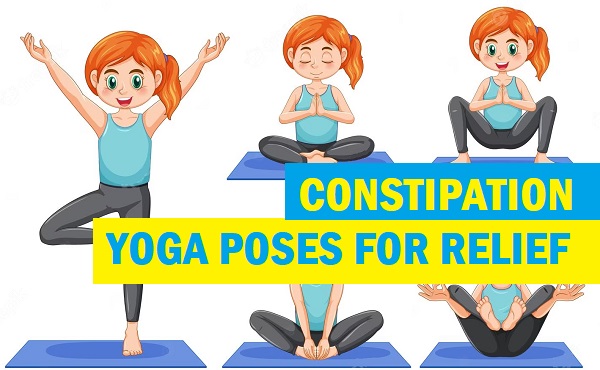
Yoga Poses To Relive Constipation with Precautions and their Individual Benefits
Constipation is a common digestive issue that can lead to discomfort and a sense of bloating. Many people seek natural remedies to alleviate constipation, and yoga poses offer an effective and gentle approach to relieve this problem. In this article, we will explore some of the best yoga poses for constipation, their benefits, and important precautions to consider while practicing them. Most of them are also beginner friendly yoga poses that can be tried easily.
Benefits of Yoga Poses for Constipation
- Improved digestion and bowel movement
- Relieved abdominal tension
- Enhanced blood circulation in the abdomen
- Stress reduction and positive impact on digestion
Yoga, an ancient practice originating from India, offers a multitude of physical and mental benefits. One can never deny the immense benefits that one can attain with the yoga. When it comes to relieving constipation, specific yoga poses can be particularly helpful.
Yoga Poses For Constipation and to Improve Digestive Health
In this section, we will delve into the details of the best yoga poses for constipation, understanding their techniques, and exploring the numerous advantages they bring to our digestive health.
1. Malasana (Garland Pose)
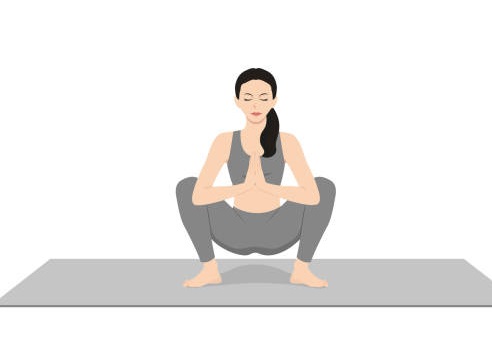
Malasana, also known as the Garland Pose, involves squatting with your feet close together while keeping your heels grounded.
Benefits:
Stretches the lower back and groin.
Aids in digestion and elimination by massaging the abdominal organs.
Strengthens the pelvic floor muscles.
2. Pavanamuktasana (Wind-Relieving Pose)
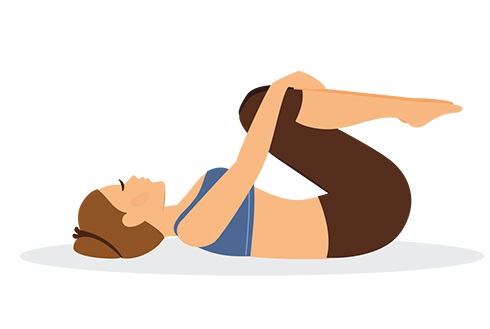
Pavanamuktasana, or the Wind-Relieving Pose, is performed by lying on your back and bringing one knee toward your chest, while the other leg remains extended.
Benefits:
Helps in releasing gas and relieving bloating.
Tones and massages the abdominal organs.
Eases lower back tension.
3. Balasana (Child’s Pose)
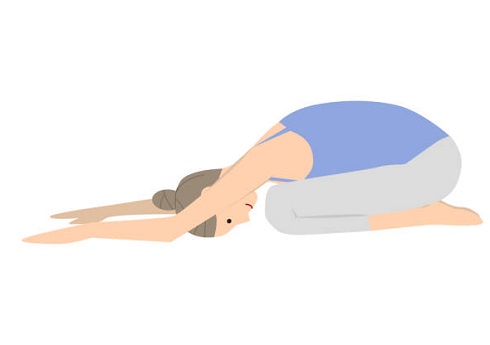
Balasana, also known as Child’s Pose, involves sitting on your heels and stretching your body forward with arms extended in front of you.
Benefits:
Calms the mind and reduces stress.
Gently stretches the lower back and hips.
Encourages healthy digestion and relieves constipation.
4. Trikonasana (Triangle Pose)
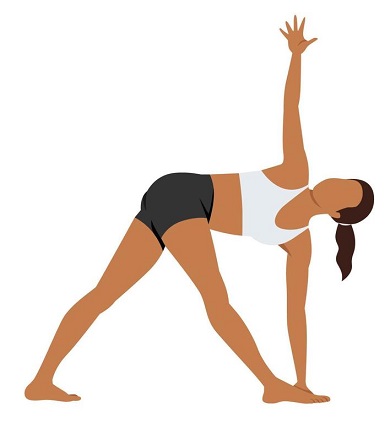
Trikonasana, the Triangle Pose, requires standing with your feet wide apart and reaching one hand down to the ankle while extending the other arm upwards.
Benefits:
Stimulates the abdominal organs.
Stretches the sides of the body and improves flexibility.
Aids in better digestion.
5. Ardha Matsyendrasana (Half Lord of the Fishes Pose)

Ardha Matsyendrasana, or Half Lord of the Fishes Pose, involves sitting with one leg crossed over the other and twisting the torso in the opposite direction.
Benefits:
Massages the abdominal organs and enhances digestion.
Stimulates the liver and kidneys.
Alleviates mild backaches.
6. Bhujangasana (Cobra Pose)
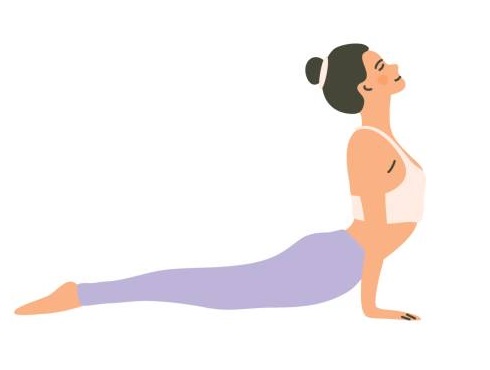
Description: Bhujangasana, the Cobra Pose, is performed by lying on your stomach, placing your palms next to your shoulders, and lifting your chest upwards.
Benefits:
Strengthens the back muscles.
Opens up the chest and improves lung capacity.
Stimulates digestive organs and helps relieve constipation.
7. Dhanurasana (Bow Pose)
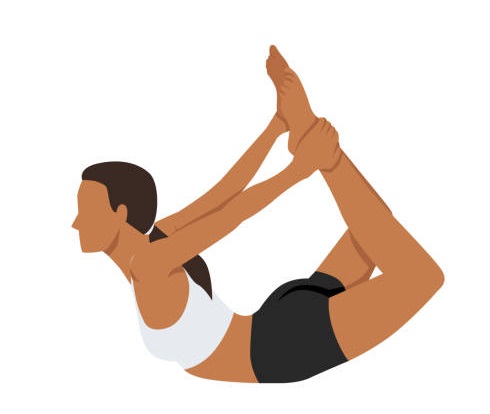
Description: Dhanurasana, also known as the Bow Pose, involves lying on your stomach, bending your knees, and reaching back to hold your ankles.
Benefits:
Stretches the entire front of the body, including the abdomen.
Massages the digestive organs and improves digestion.
Relieves mild backaches.
8. Matsyasana (Fish Pose)
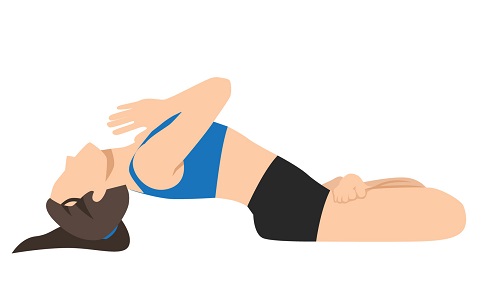
Matsyasana, the Fish Pose, requires lying on your back, lifting your chest, and arching your back to create a gentle backbend.
Benefits:
Stretches the abdomen and neck.
Stimulates the thyroid gland, which helps regulate metabolism.
Enhances digestion and relieves constipation.
9. Paschimottanasana (Seated Forward Bend)
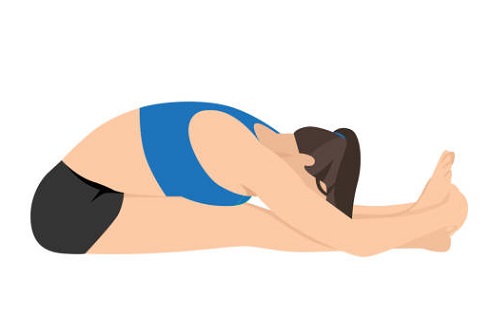
Paschimottanasana, the Seated Forward Bend, involves sitting with your legs extended and bending forward to reach your toes.
Benefits:
Stretches the entire back of the body.
Massages the abdominal organs and improves digestion.
Calms the mind and reduces stress.
10. Supta Matsyendrasana (Supine Spinal Twist)
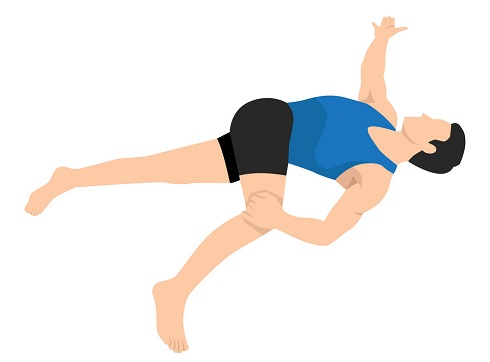
Supta Matsyendrasana is a supine twist where you lie on your back, bend one knee, and twist it over the opposite leg.
Benefits:
Stimulates the digestive organs and aids in detoxification.
Relieves lower back tension.
Enhances spinal flexibility.
11. Naukasana (Boat Pose)
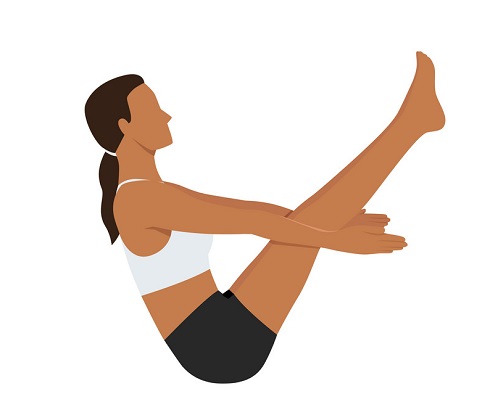
Naukasana, the Boat Pose, involves balancing on your sit bones while lifting your legs and upper body to create a “V” shape.
Benefits:
Strengthens the abdominal muscles and aids in motion.
Massages the digestive organs and improves digestion.
Stimulates the kidneys and thyroid glands.
12. Marjariasana (Cat-Cow Pose)
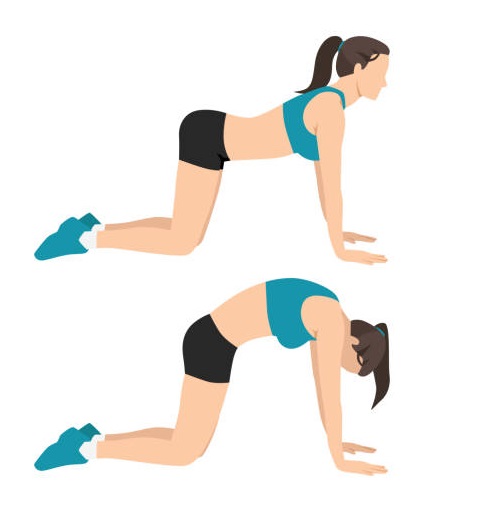
Marjariasana, the Cat-Cow Pose, is a dynamic sequence of arching and rounding the spine while on all fours.
Benefits:
Massages the digestive organs and enhances digestion.
Increases spinal flexibility and relieves tension in the back.
Promotes a sense of calmness and relaxation.
13. Ustrasana (Camel Pose)
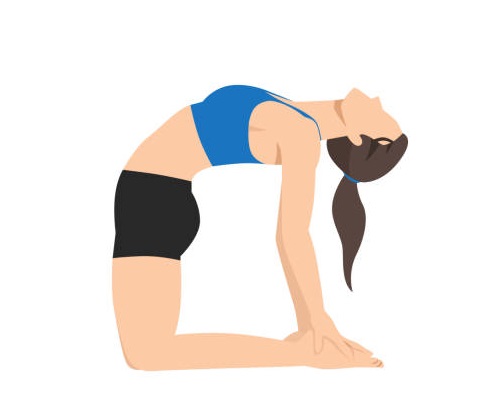
Ustrasana, the Camel Pose, involves kneeling and arching the back while reaching back to hold the heels.
Benefits:
Stretches the front of the body, including the abdomen.
Stimulates the digestive organs and enhances digestion.
Improves posture and respiratory function.
14. Uttanasana (Standing Forward Bend)
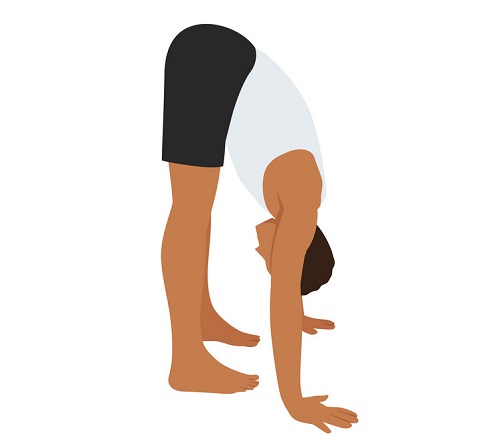
Uttanasana, the Standing Forward Bend, requires bending forward from the hips with your hands reaching towards the ground.
Benefits:
Calms the mind and reduces stress.
Stretches the back and hamstrings.
Stimulates the abdominal organs, and improves digestion and relives constipation.
15. Ananda Balasana (Happy Baby Pose)
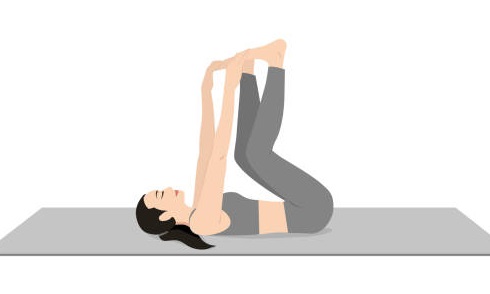
Ananda Balasana, or Happy Baby Pose, is performed by lying on your back and holding your feet, bringing your knees towards your armpits.
Benefits:
Relieves lower back tension and hip tightness.
Gently stretches the inner groins and massages the abdomen.
Promotes a sense of relaxation and calm.
Incorporating yoga into your routine can be a wonderful way to support digestive health and relieve constipation. The yoga poses mentioned above not only aid in better digestion but also provide various other physical and mental benefits. Remember to practice these poses regularly and mindfully, allowing yourself to embrace the calming effects they bring to your overall well-being.
Precautions to Keep in Mind
When practicing yoga, it’s essential to keep some precautions in mind to ensure a safe and enjoyable experience. Here are some key precautions to follow while doing yoga poses:
Warm-Up: Always start with a gentle warm-up to prepare your body for the practice. This helps to prevent injuries and allows your muscles to loosen up.
Listen to Your Body: Pay attention to how your body feels during each pose. If you experience pain or discomfort, ease out of the pose or modify it to suit your needs.
Avoid Overexertion: Do not push yourself beyond your limits. Respect your body’s abilities and progress gradually. Avoid forcing yourself into advanced poses without proper preparation.
Breathing: Focus on your breath and maintain steady, deep breathing throughout the practice. Avoid holding your breath during challenging poses.
Proper Alignment: Ensure correct alignment in each pose to avoid strain on joints and muscles. If you’re unsure, seek guidance from a qualified yoga instructor.
Injuries or Health Conditions: If you have any existing injuries or health conditions, inform your instructor before the class. They can suggest modifications to accommodate your needs.
Pregnancy: If you are pregnant, avoid certain poses and consult a prenatal yoga instructor for suitable modifications.
Avoid Eating Before Practice: Avoid heavy meals at least two hours before yoga practice to prevent discomfort during the session.
Stay Hydrated: Drink enough water before and after your practice to stay hydrated.
Props: Use props like blocks, straps, or cushions to assist in achieving proper alignment and to make poses more accessible.
Consistency: Regular practice is beneficial, but avoid practicing intensely every day. Give your body enough time to rest and recover.
Avoid Comparisons: Yoga is a personal journey, and everyone’s abilities differ. Avoid comparing yourself to others and focus on your progress.
Avoid Rapid Transitions: Move mindfully between poses and avoid sudden, jerky movements that may lead to injury.
Rest: Incorporate Savasana (Corpse Pose) at the end of your practice to allow your body to relax and absorb the benefits of the session.
Stay Hygienic: Bring your own yoga mat and towel, and maintain proper hygiene during the practice.
Remember, yoga is a practice of self-awareness and self-care. By observing these precautions, you can create a safe and fulfilling yoga experience that nurtures both your body and mind.
Yoga provides a holistic approach to promote digestive health and alleviate constipation. By regularly practicing the best yoga poses for constipation, individuals can experience improved digestion, reduced abdominal discomfort, and enhanced overall well-being.
FAQs
Q1: Can yoga completely cure constipation?
While yoga can be beneficial in relieving constipation, it is essential to maintain a healthy lifestyle, including a balanced diet and regular physical activity, for long-term relief.
Q2: How long should I hold each yoga pose to experience its benefits fully?
Aim to hold each pose for at least 30 seconds to 1 minute, gradually increasing the duration as you become more comfortable.
Q3: Can beginners practice these yoga poses for constipation?
Yes, beginners can practice these poses, but it is recommended to start slowly and seek guidance from a qualified yoga instructor.
Q4: Is there a specific time of day to practice these yoga poses for better digestion?
While there’s no strict rule, practicing yoga poses for constipation can be beneficial in the morning or evening, avoiding heavy meals before the practice.
Q5: Can yoga help with other digestive issues, such as bloating and gas?
Yes, yoga can help alleviate bloating and gas by improving digestion and promoting the overall health of the digestive system.
Q6: How long should I hold each yoga pose to relieve constipation effectively?
The duration of holding each pose may vary, but generally, aim for 30 seconds to 1 minute initially, gradually extending the time as your practice progresses.
Q7: Can yoga help with chronic constipation issues?
Yes, yoga can be beneficial for managing chronic constipation by regulating bowel movements and reducing stress.
Q8: Are there any dietary recommendations to complement yoga for constipation relief?
Yes, it is essential to maintain a balanced diet rich in fiber and water intake to support the effects of yoga on constipation.
Q9: Can pregnant women safely practice these yoga poses?
Pregnant women should practice yoga under the guidance of a qualified instructor, and certain poses may need modification.
Q10: How often should I practice these yoga poses for the best results?
Consistency is key. Aim for at least 3-4 sessions per week for noticeable improvements in constipation relief.
By incorporating these yoga poses into your routine while being mindful of precautions, you can take a significant step towards managing constipation naturally and enhancing your overall well-being. Remember to practice regularly, stay hydrated, and maintain a healthy diet for optimal results.
 Tips and Beauty Site about Skin care, Hair care, Health, weight loss and lifestyle tips
Tips and Beauty Site about Skin care, Hair care, Health, weight loss and lifestyle tips



